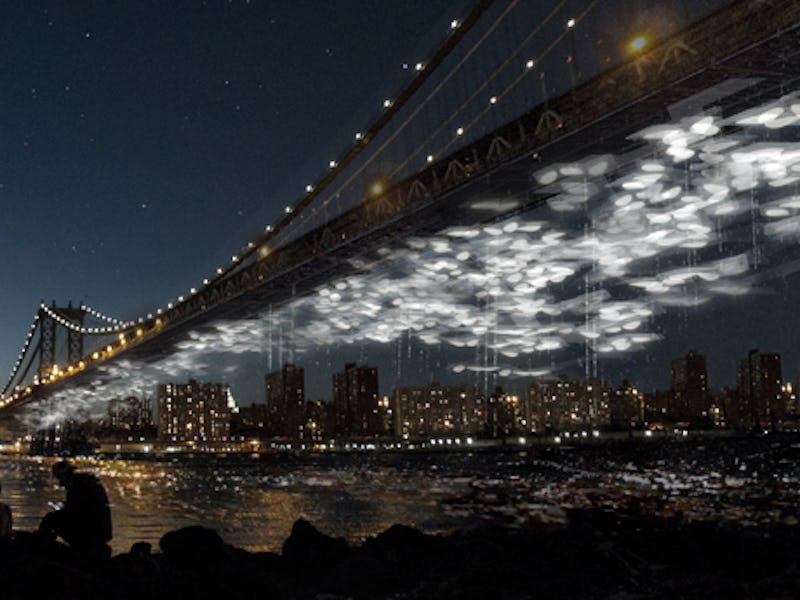Imagine taking a romantic stroll through a park on a Friday night with your significant other, guided by effervescent globes that whimsically light the way and produce zero CO2 admissions. Researchers at Columbia University say this eco-friendly fairytale is possible, but it’s going to take a lot of dead bodies to get there.
Constellation Park, the vision described above, is the work of researchers at the DeathLab, an interdisciplinary research and design space focused on reimagining how we live among death in urban areas. Researchers for the project are trying to solve the problem of increasingly scarce burial space in urban areas by combining architecture, biology, and engineering to help dispose of the dead in a way that gives back to the living.
“The whole point of this is that we’re running out of space and that’s what’s really driving some of this.” Kartik Chandran, Associate Professor of Earth and Environmental Engineering at Columbia University and a 2015 MacArthur Grant recipient, tells Inverse.
In DeathLab’s designs, instead of being assigned burial plots, bodies would be buried in “memorial vessels” that would help speed up decomposition using microbial processes to speed up decomposition and then feed the energy into fuel cells.
A diagram for the park.
Karla Rothstein, director of the lab, approached Chandra when she came across his research on microbial conversion. Rothstein was interested in how anaerobic microbial processes could be used to decompose bodies in a way that was environmentally friendly. Chandran said the visit “quite unexpected” but the curious nature of the project sparked his interest.
His lab had already been working on developing technologies based on anaerobic conversion in order to extract energy from waste streams, such as sewage. Unlike aerobic conversion, which produces CO2 and is bad for the environment, anaerobic conversation can produce compounds like methane, which can be used for energy.
But as Chandran notes, radicalizing the ways we memorialize death has a very “human element” to it and isn’t just about the science.
“We’re really trying to fit the biological side of this with the handling,” he says. “We cannot really think of this as feeding something of this into the biological reaction.”
Cities all over the world are facing the problem of burial plot crowding as populations skyrocket and concentrate in urban centers. There’s only one active cemetery in Manhattan and the researchers at the DeathLab have found that the city’s low-income residents are pushed into burying their family up to a hundred miles away just to afford a plot.
The pods could be used to light a bike path.
Projects like Constellation Park would combine Chandran’s work with cutting-edge designs in order to create a suspended public memorial.
“The memorial network serves as an enduring collective urban cenotaph for intimate individual memories supporting the diverse cycles and vitality of life,” designers state in a description of the project on their website. “Its ‘footprint’ is invisible,”
“If there’s sufficient acceptability, socially speaking, I think this could be part of the different options [for solving the burial space crisis,]” says Chandran.
The team hopes that as their model develops, it can be applied in similar ways to places like Japan, where overcrowding of burial sites is also an increasingly urgent problem.
Chandran is quick to note that while energy from biomass could be used to power something like a park, it’s not meant to be a large-scale energy source.
While the pods could produce energy, decomposing biomass also reintroduces nutrients like nitrogen to the soil.
“It’s really rejuvenation and renewal we’re aiming for,” he says.
